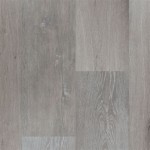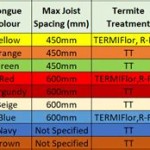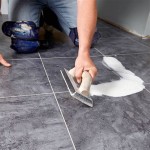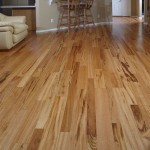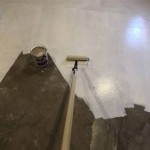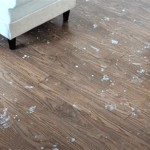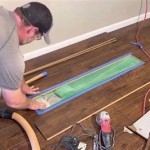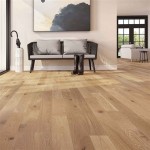How To Remove Sticky Residue From Floor Tiles
Sticky residue on floor tiles is a common household problem that can arise from a variety of sources. From spilled food and drinks to adhesive remnants from removed stickers or tape, these sticky patches can be unsightly and difficult to clean. Successfully removing sticky residue requires understanding the type of residue and selecting the appropriate cleaning method to avoid damaging the tile surface. This article provides a comprehensive guide to identifying, addressing, and preventing sticky residue on various types of floor tiles.
The first step in tackling sticky residue is to identify its source. Different substances require different cleaning approaches, so accurately determining the type of residue is crucial for effective removal. Common culprits include sugary spills, cooking grease, adhesive from labels or flooring materials, and residue from cleaning products themselves.
Once the source is identified, proceed with caution when selecting a cleaning method. Avoid abrasive scrubbers or harsh chemicals initially, as these can scratch or damage the tile surface, especially on more delicate materials like marble or certain ceramic tiles. Always test a cleaning solution on an inconspicuous area of the floor first to ensure it does not cause discoloration or other adverse effects.
Identifying the Type of Sticky Residue
Accurately identifying the nature of the sticky residue is paramount to selecting the correct cleaning method. Failure to do so could result in ineffective cleaning or even damage to the floor tiles. Consider the following common types of sticky residue and their characteristics:
Sugary Spills: These are often the easiest to identify and typically result from spilled drinks like juice, soda, or sticky candies. They are usually water-soluble and leave a tacky film on the surface. The residue can also attract dirt and insects.
Cooking Grease: Grease splatters from cooking, especially frying, can create a persistent sticky layer. This type of residue is hydrophobic, meaning it repels water, and requires a degreasing agent for effective removal. It can accumulate over time, making it harder to clean if left unattended.
Adhesive Residue: This type of residue usually originates from removed stickers, tape, or temporary flooring adhesives. The stickiness can vary depending on the type of adhesive used. Some adhesives dissolve easily with solvents, while others require more aggressive methods.
Soap and Cleaning Product Buildup: Over time, improper rinsing after cleaning can lead to a buildup of soap or cleaning product residue. This residue can create a dull film and attract dirt, making the floor appear constantly dirty. Using too much cleaning product or not rinsing thoroughly are common causes.
Wax Residue: While less common in modern flooring, wax buildup can occur on older tiles or from specific cleaning products containing wax. This residue can create a slippery surface and attract dust and dirt.
By carefully observing the appearance, texture, and location of the sticky residue, it's possible to narrow down the cause and choose the most appropriate cleaning solution.
Effective Cleaning Methods for Removing Sticky Residue
Once the type of sticky residue has been identified, the following cleaning methods can be employed. Always start with the gentlest method and gradually increase the intensity as needed, testing the solution on an inconspicuous area first.
Hot Water and Mild Dish Soap: This is a good starting point for many types of sticky residue, especially sugary spills. Mix a small amount of dish soap with hot water and apply it to the affected area. Let it sit for a few minutes to loosen the residue, then scrub gently with a soft cloth or sponge. Rinse thoroughly with clean water and dry the area.
Vinegar Solution: White vinegar is a natural cleaning agent that can effectively dissolve many types of sticky residue, including soap scum and some adhesives. Mix equal parts white vinegar and water in a spray bottle. Spray the solution onto the sticky area, let it sit for a few minutes, and then scrub gently. Rinse thoroughly with clean water.
Baking Soda Paste: For more stubborn sticky residue, a baking soda paste can be used. Mix baking soda with a small amount of water to create a thick paste. Apply the paste to the affected area, let it sit for a few minutes, and then scrub gently with a soft cloth or sponge. Rinse thoroughly with clean water. Baking soda is mildly abrasive, so use it cautiously on delicate tile surfaces.
Rubbing Alcohol: Rubbing alcohol is effective for removing adhesive residue. Apply rubbing alcohol to a clean cloth and gently rub the sticky area. The alcohol should dissolve the adhesive. Repeat as needed and rinse the area with clean water.
Commercial Adhesive Removers: If the sticky residue is from a strong adhesive, a commercial adhesive remover may be necessary. Follow the manufacturer's instructions carefully and test the product on an inconspicuous area first. Apply the remover to the affected area, let it sit for the recommended time, and then scrub gently. Rinse thoroughly with clean water.
Steam Cleaning: A steam cleaner can be an effective way to loosen and remove sticky residue without the use of harsh chemicals. The steam helps to dissolve the residue, making it easier to wipe away with a clean cloth. Be sure to use the appropriate attachment for floor tiles and follow the manufacturer's instructions.
When using any cleaning solution, it's important to avoid soaking the floor tiles, as excessive moisture can seep into the grout and cause damage. Always wring out the cloth or sponge thoroughly before applying it to the floor.
Preventing Sticky Residue Buildup on Floor Tiles
Prevention is the most effective long-term strategy for maintaining clean and residue-free floor tiles. Implementing preventative measures can significantly reduce the need for intensive cleaning and maintain the aesthetic appeal of the flooring.
Regular Cleaning: Establish a regular cleaning routine to prevent the accumulation of dirt and grime. Sweeping or vacuuming the floor regularly will remove loose debris that can contribute to sticky residue. Mopping the floor with a mild cleaning solution at least once a week will help to remove spills and prevent buildup.
Prompt Spill Cleanup: Clean up spills immediately to prevent them from hardening and becoming sticky. The longer a spill sits, the more difficult it will be to remove. Use a clean cloth or paper towel to blot the spill and then clean the area with a mild cleaning solution.
Proper Rinsing After Cleaning: Ensure that the floor is thoroughly rinsed after cleaning to remove any soap or cleaning product residue. Use clean water and a clean mop or cloth to rinse the floor. This will prevent the buildup of a dull film and keep the floor looking clean and shiny.
Use of Floor Mats and Rugs: Place floor mats at entrances to trap dirt and debris before it enters the house. Rugs can also be used in high-traffic areas to protect the floor tiles from spills and wear. Regularly clean or replace floor mats and rugs to maintain their effectiveness.
Avoid Excessive Use of Cleaning Products: Using too much cleaning product can lead to residue buildup. Follow the manufacturer's instructions carefully and use only the recommended amount of product. Using less is often more effective and prevents the buildup of residue.
Choosing the Right Cleaning Products: Select cleaning products that are specifically designed for floor tiles. Avoid using harsh chemicals or abrasive cleaners that can damage the tile surface. Use pH-neutral cleaners to protect the grout and prevent discoloration.
Proper Ventilation: Ensure adequate ventilation when cleaning with cleaning products. Open windows or turn on a fan to circulate air and prevent the buildup of fumes. This is especially important when using stronger cleaning agents.
By implementing these preventative measures, it is possible to significantly reduce the occurrence of sticky residue on floor tiles and maintain clean, attractive flooring for years to come. Regular maintenance and a proactive approach to cleaning will minimize the need for intensive cleaning and protect the investment in floor tiles.
Ultimately, the successful removal and prevention of sticky residue on floor tiles hinges on identifying the type of residue, selecting the appropriate cleaning method, and implementing proactive preventative measures.

How Do I Remove Vinyl Glue Off Of Tile Flooring Home Improvement Stack Exchange

How To Remove L And Stick Floor Tile A Erfly House

How To Remove L And Stick Floor Tile A Erfly House

How To Remove L And Stick Floor Tile A Erfly House

Removal How To Remove Old Vinyl Tiles Home Improvement Stack Exchange

How To Remove L And Stick Linoleum Tiles With An Iron

How To Remove Sticky Residue From L And Stick Tiles

How To Remove L And Stick Floor Tile A Erfly House

How To Remove Tile Adhesive Maid2match

Best Ways To Take Out Even Impossible Remove Glue From Floors
See Also
